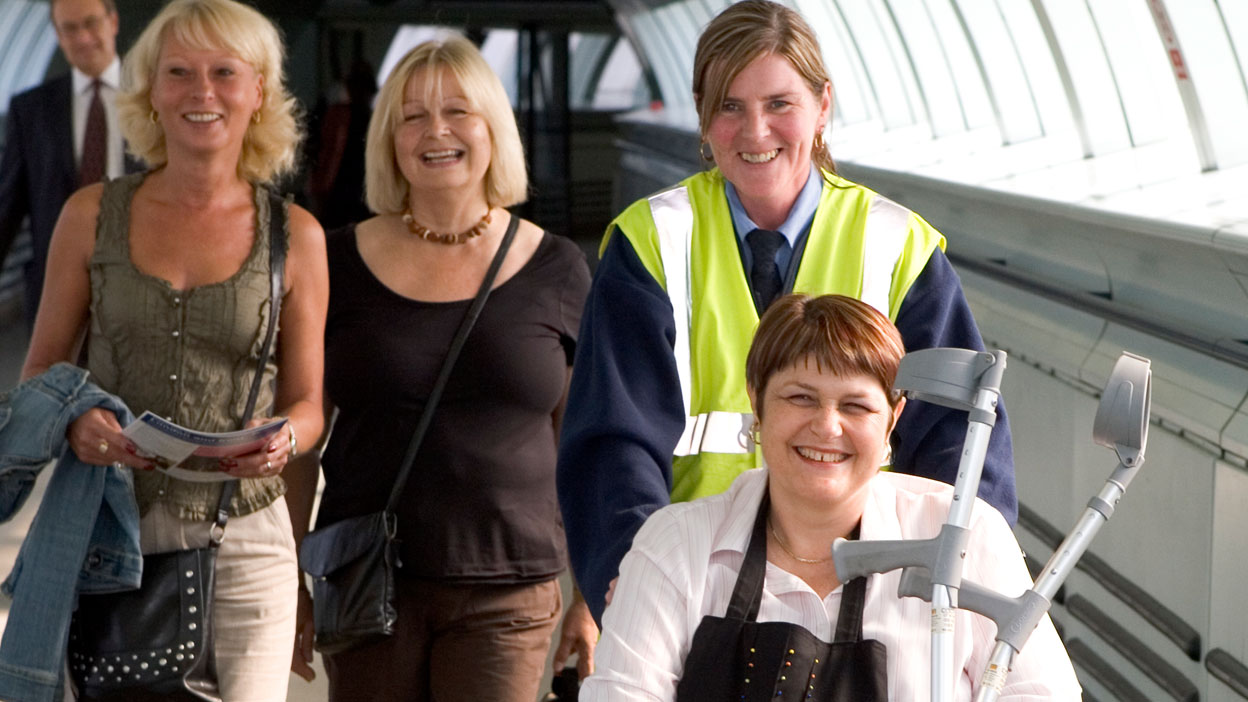A truly public transport service should be accessible by as many people as possible. We recognise that different passengers have different needs, whether they’re passengers using wheelchairs or mobility scooters, those who have difficulty walking, are pregnant or are travelling with young children.
Train company Southern has embarked on an exercise to encourage disabled people to travel by train. Working together with passengers, Southern is aiming to ensure train services are easy to access, use and navigate, and that people feel confident and safe using them. A series of ‘Try a Train’ days have been held, designed to help new or infrequent rail travellers familiarise themselves with the process of travelling by railway. From buying a ticket, to boarding a train and finding out information, the day helps those with additional needs to build confidence in train travel as a viable option of public transport.
As 60% of disabled people have no car within their household, (compared with 27% of the overall population), unplanned travel can be difficult and sometimes even impossible. A survey for the Disabled Persons Transport Advisory Committee (DPTAC) in 2002 showed that disabled people made only two thirds as many journeys as non-disabled people.
Through positive feedback from customers the ‘Try a Train’ days have been expanded to the initiative ‘Try a Train and See Where It Can Take You’. Southern wanted to go one step further and show what opportunities lay beyond a train trip such as new places to visits, shopping trips, meeting friends and even employment. It aimed to show this group of passengers the wider benefits of train travel and the opportunities they could access either independently or with support.
Passengers needing assistance to make a rail journey – can call a 24 hour dedicated assisted travel service which will arrange for staff to be on hand when and where needed. There are times when we’ll arrange alternative transport (usually taxis) for disabled customers if their local railway station is inaccessible.
Unfortunately many of our railway stations were designed and built in the Victorian era – a time when accessibility wasn’t considered. So many of them are not wholly accessible. So we have dedicated managers working closely with colleagues at Network Rail to secure funding to improve our stations under the ‘access for all’ schemes. The money generally ensures stations have ‘step-free’ access meaning that installing lifts and ramps are installed to make them easier places for everyone to use.
In addition, our companies have introduced a number of innovative initiatives to help passengers. Southern became the first train company to install ‘Maps for All’, working in partnership with the Royal National Institute of Blind People (RNIB). These maps detail all the facilities available at the station in braille and raised coloured plastic so that passengers can find their own way to the station facilities; a particular benefit to passengers with learning difficulties or who have a visual impairment.


